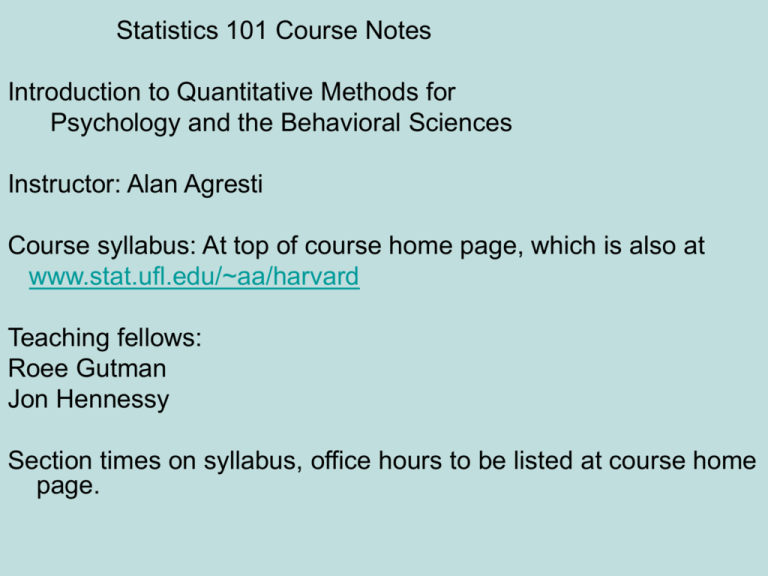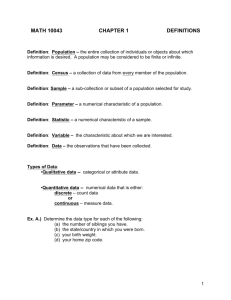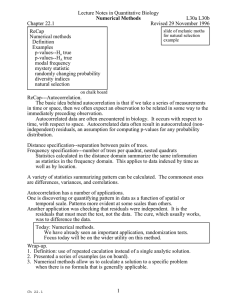I. Introduction
advertisement

Statistics 101 Course Notes Introduction to Quantitative Methods for Psychology and the Behavioral Sciences Instructor: Alan Agresti Course syllabus: At top of course home page, which is also at www.stat.ufl.edu/~aa/harvard Teaching fellows: Roee Gutman Jon Hennessy Section times on syllabus, office hours to be listed at course home page. 1. Introduction • Data - Information collected to gain knowledge about a field or answer a question of interest. • Data Sources include: – Surveys – Experiments • Statistics- Set of methods for collecting/analyzing data (the art and science of learning from data) Statistics provides methods for: • Design - Planning/Implementing a study – Sample survey or experiment? – How to choose people (subjects) for the study, and how many? • Description – Graphical and numerical methods for summarizing the data • Inference – Methods for making predictions about a population (total set of subjects of interest), based on a sample (subset of the sample on which study collects data) Examples • Parameter – Numerical summary of the population – Population mean – Population proportion • Statistic – Numerical summary of the sample We use the sample statistic to make inferences about the population parameter. Examples: parameters / statistics Note: • Populations can be actual sets of people or conceptual (hypothetical) • For good inferences, need sample to be representative of population • Statistical software is used to analyze data Software applies to data files • Any one row contains observations for particular subject (person) in sample • Any one column contains observations for a particular characteristic (“variable”) measured. The names of the characteristics are at top of file, in first row. Examples: Go to www.stat.ufl.edu/~aa/social/data.html The first data file, from a survey of 60 students at Univ. of Florida, looks like: subject gen age high coll tv veg party ideology abor 1 m 32 2.2 3.5 3 n r 6 n 2 f 23 2.1 3.5 15 y d 2 y 3 f 27 3.3 3.0 0 y d 2 y 4 f 35 3.5 3.2 5 n i 4 y 5 M 23 3.1 3.5 6 n i 1 y When loaded by SPSS, looks like:











